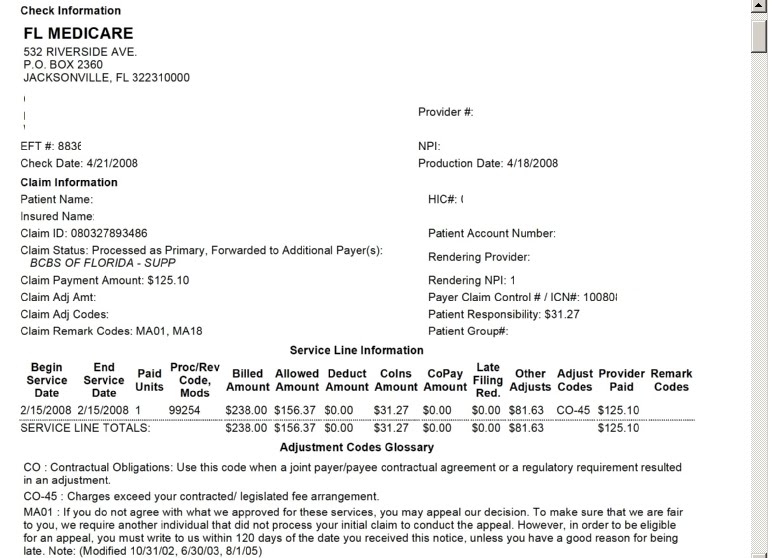Understanding Fee for Service Medicare
Navigating the complexities of Medicare can feel overwhelming. One of the most fundamental concepts to understand is "fee for service Medicare." What exactly does this term mean, and how does it impact your healthcare coverage? This comprehensive guide will unravel the intricacies of fee-for-service Medicare, empowering you to make informed decisions about your healthcare.
Fee for service Medicare, often referred to as Original Medicare, is a traditional payment system where Medicare pays directly for each covered healthcare service you receive. This means you can generally see any doctor or hospital that accepts Medicare, providing you with significant flexibility in your healthcare choices. Understanding this system is crucial for effectively managing your healthcare costs and accessing the care you need.
Unlike Medicare Advantage plans, which often involve networks and pre-authorizations, fee-for-service Medicare allows you to receive care from any participating provider without needing referrals. This freedom of choice is a significant advantage for many beneficiaries, especially those who prefer to see specialists or travel frequently.
While the concept of paying for each service might seem straightforward, there are nuances to fee-for-service Medicare that can impact your out-of-pocket expenses. For instance, Medicare typically covers 80% of the approved amount for covered services, leaving you responsible for the remaining 20% coinsurance. Understanding these cost-sharing aspects is essential for budgeting and avoiding unexpected medical bills.
Historically, fee-for-service Medicare has been the cornerstone of the Medicare program since its inception in 1965. It represents a fundamental approach to healthcare coverage, focusing on direct reimbursement for individual services rather than bundled payments or capitated rates. This traditional payment structure has played a significant role in shaping the American healthcare landscape. However, as healthcare costs continue to rise, the fee-for-service model faces increasing scrutiny for its potential to incentivize overutilization of services.
Medicare's fee schedule dictates the approved amount for each service, which is based on a complex system of relative value units. These units consider the work involved, practice expense, and malpractice insurance costs associated with each service. The fee schedule helps to standardize payments and provide transparency for both providers and beneficiaries. For example, if you have a doctor's visit, Medicare will pay 80% of the fee schedule amount for that specific visit code, and you will be responsible for the remaining 20%.
One of the main benefits of fee-for-service Medicare is provider choice. You can see any doctor or hospital that accepts Medicare assignment, without needing referrals or pre-authorizations. This flexibility can be especially valuable for individuals who require specialized care or have established relationships with specific providers.
Another advantage is predictable costs. While you are responsible for 20% coinsurance and deductibles, the fee schedule provides transparency and helps you anticipate your out-of-pocket expenses. This predictability allows for better budgeting and financial planning.
A third benefit is nationwide coverage. Fee-for-service Medicare is accepted across the United States, allowing you to access care wherever you go. This is particularly helpful for those who travel frequently or split their time between different locations.
Advantages and Disadvantages of Fee-for-Service Medicare
| Advantages | Disadvantages |
|---|---|
| Flexibility in provider choice | Potentially higher out-of-pocket costs (20% coinsurance, deductibles) |
| Nationwide coverage | No out-of-pocket maximum, except with supplemental insurance (Medigap) |
| Predictable costs based on the fee schedule | May require more paperwork and coordination of care |
Frequently Asked Questions
1. What is the difference between Original Medicare and Medicare Advantage? Original Medicare uses a fee-for-service model, while Medicare Advantage plans are offered by private insurers and often involve networks and different cost-sharing structures.
2. What is Medicare Part B? Part B covers doctor visits, outpatient services, and preventive care under the fee-for-service model.
3. How much does fee-for-service Medicare cost? Costs include premiums, deductibles, and 20% coinsurance for covered services.
4. Do I need supplemental insurance with fee-for-service Medicare? Supplemental insurance, like Medigap, can help cover the 20% coinsurance and other out-of-pocket costs.
5. Can I see any doctor with fee-for-service Medicare? Yes, you can see any doctor or hospital that accepts Medicare assignment.
6. What is the Medicare fee schedule? The fee schedule is a list of approved amounts that Medicare pays for different services.
7. How do I find a doctor who accepts fee-for-service Medicare? You can use the Medicare Physician Finder tool online.
8. What is Medicare Part A? Part A covers hospital stays, skilled nursing facility care, and some home healthcare services under the fee-for-service model.
In conclusion, fee-for-service Medicare provides a traditional payment approach with significant flexibility in provider choice and nationwide coverage. While understanding the cost-sharing aspects and potential for higher out-of-pocket expenses is crucial, the predictable cost structure and freedom to choose your healthcare providers make fee-for-service Medicare a viable option for many beneficiaries. By carefully considering your individual healthcare needs and financial situation, you can make an informed decision about whether fee-for-service Medicare is the right choice for you. Take the time to research and compare different Medicare options, and don't hesitate to seek guidance from Medicare.gov or other reputable resources to ensure you are making the most of your healthcare coverage. Understanding the nuances of fee for service and other options will empower you to take control of your healthcare journey and access the care you need. This knowledge is essential for navigating the complex Medicare landscape and making choices that align with your individual health and financial goals.
Mastering the upside down smiley a complete guide
Johnstones gloss paint reviews decoded
Concrete void formers the secret sauce of slab construction

-24767-p.jpg?v=0C05EB52-D0AB-4A16-9645-409295BCCD94)












